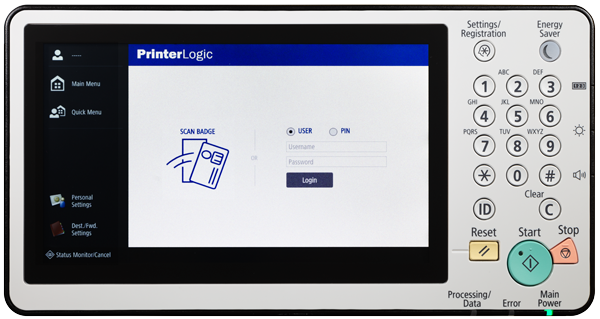Between high-profile ransomware attacks and repeated data breaches, enterprise data security is in the headlines like never before. That means it’s also at the front of people’s minds like never before. Keeping data safe has quickly become a top priority for any organization that’s concerned about the privacy of its own information as well as its public reputation.
The importance of the print environment in all this hasn’t gone unnoticed. According to a 2019 report from Quocirca, close to two-thirds of organizations rank print as one of their top five security risks. And more than three-quarters of them are boosting their spending on network printing solutions that offer features like secure printing in order to help minimize data loss.
In most print environments, you’ll find three common vulnerabilities:
1. Central points of attack: With traditional print infrastructures like print servers, you’ve got one device handling printing for an entire pool of users. From a print security standpoint, that’s just the same as putting all your eggs in one basket. Hackers who want access to a rich pot of data can just target the job queues or caches on the print servers.
Furthermore, print servers’ single points of failure restrict print availability. When the server goes offline, so does printing.
2. Printed document exposure: So-and-so prints a personal email, gets distracted, and forgets to pick it up. Then someone else finds that printed email sitting in the printer’s output tray and just happens to read it, resulting in lots of embarrassment.
We’ve all seen something like that happen. Maybe we’ve been guilty of it ourselves. And what’s worse, sometimes it’s more than just a personal email. It could be private company memos or documents detailing serious HR shake-ups or top-secret products.
3. Lack of unified oversight: This can include everything from unpatched server software and out-of-date drivers to employees being able to print almost anything, including confidential documents, without risk of detection. Without the tools for comprehensive oversight, admins have limited ability to keep tabs on the state of the print environment and what’s happening across it.
If print security is so important, what’s the holdup?
With so many organizations at risk from one or more of these vulnerabilities, you’d think that they would be ramping up print security without skipping a beat. But increased security doesn’t necessarily come quick or easy.
For example, if you choose to implement secure printing, you’ll need some kind of secure release mechanism. That often involves rolling out more infrastructure at a time when everyone’s trying to find infrastructure reduction solutions.
There’s also the lingering issue with print servers. Unless you ditch your print servers for good, there’s no way to fully eliminate issues with single points of attack. You retain your single points of failure, too, which makes high-availability printing harder to achieve.
Print security with reduced infrastructure and high availability
PrinterLogic is unique among network printing solutions because it lets you have print security without sacrificing high-availability printing and also reduces infrastructure. It combines stable, straightforward direct-IP printing with centralized management to create a robust, secure serverless infrastructure.
So what does that look like on the ground?
- Eliminate print servers: PrinterLogic Web Stack (on-prem) and PrinterLogic SaaS (formerly PrinterCloud) provide full-featured printing with zero need for print servers—even in large and distributed organizations. By getting rid of print servers, you remove all of their security and availability shortcomings in one fell swoop.
- Experience full oversight: A centralized admin console lets you manage and monitor every aspect of the print environment intuitively from a single pane of glass. The common driver repository makes it easy to keep drivers consistent and up to date across the organization.
- Audit print activity: PrinterLogic’s optional print auditing module can automatically generate reports and alerts. That allows admins to keep tabs on print activity and shine a light on previously dark corners of the print environment.
- Implement easy-to-use secure printing: Want secure printing that doesn’t annoy your end users? Among several other release mechanisms, PrinterLogic offers a Print Release App for iOS and Android. With the app, end users can securely execute pending print jobs right from their smartphones. Better still, it doesn’t require any extra infrastructure. And if you’ve got an existing badge or card system, great. PrinterLogic can integrate seamlessly with that too.
With PrinterLogic, you get the enterprise-grade security your organization needs to protect its print data. But it doesn’t stop with that. You also get infrastructure reduction and high-availability printing to boot.
Just look at how things went down with EPIC Management (read the case study here). Secure release printing is notoriously tough to implement in healthcare organizations. And yet, using PrinterLogic, EPIC Management was able to create a solid chain of custody for its protected health information (PHI) while also simplifying its print environment.
To see what it’s like to have print security with all the advantages and none of the tradeoffs, sign up for a PrinterLogic demo today. You can test it in your own print environment free of charge for 30 days.
